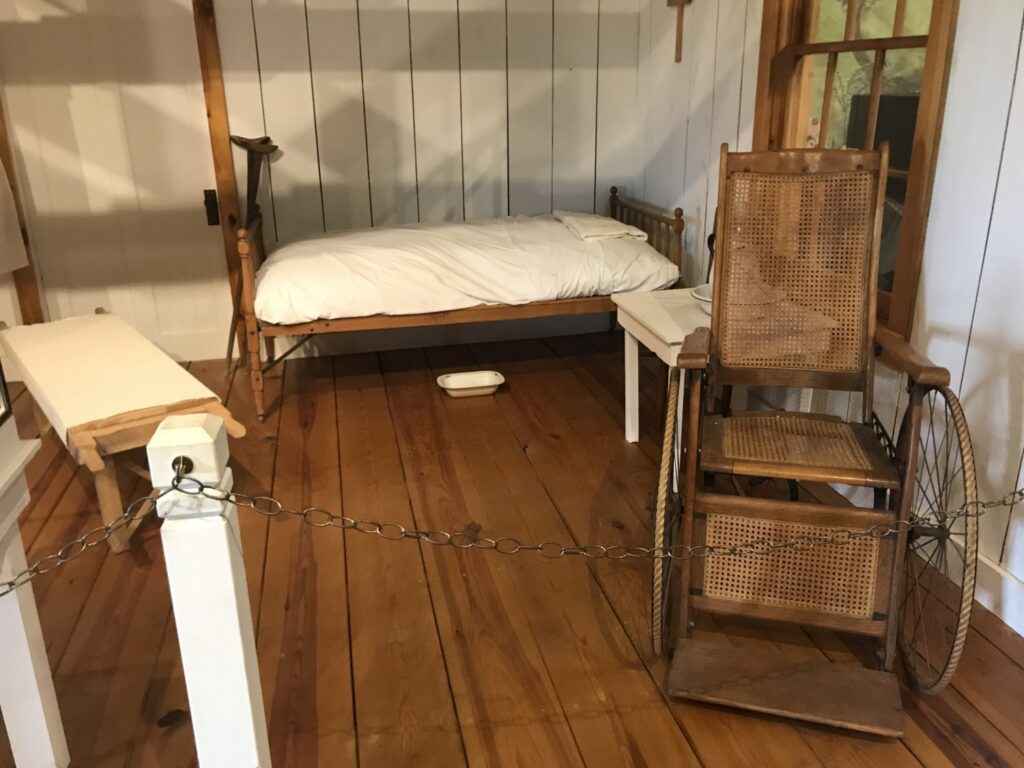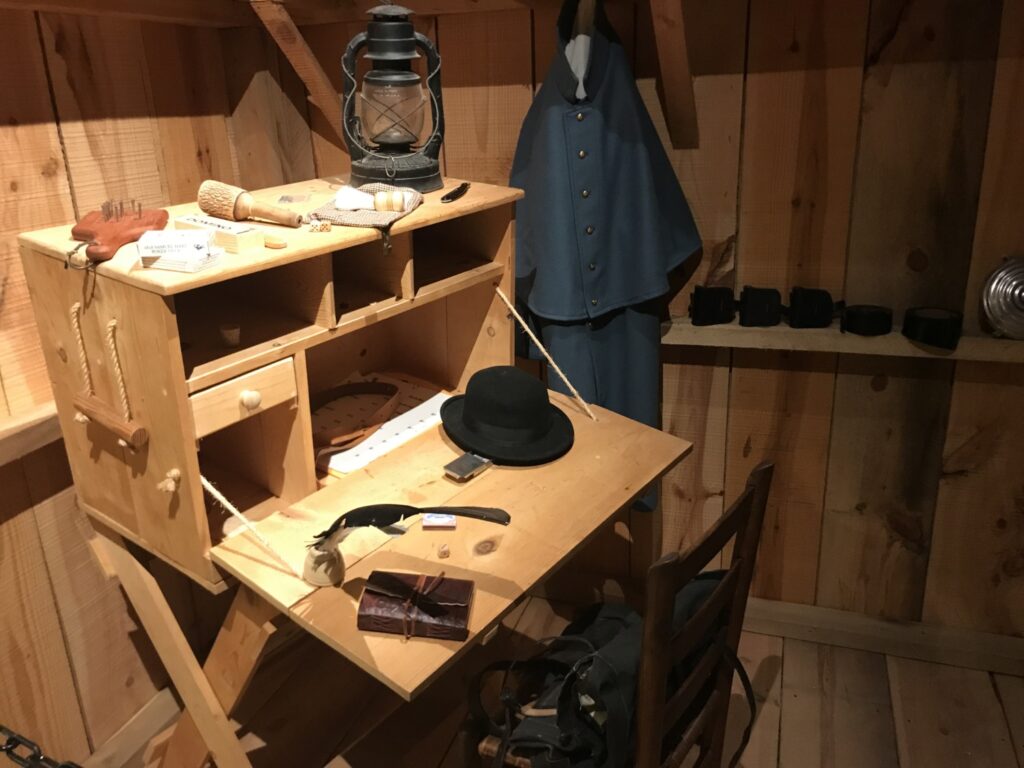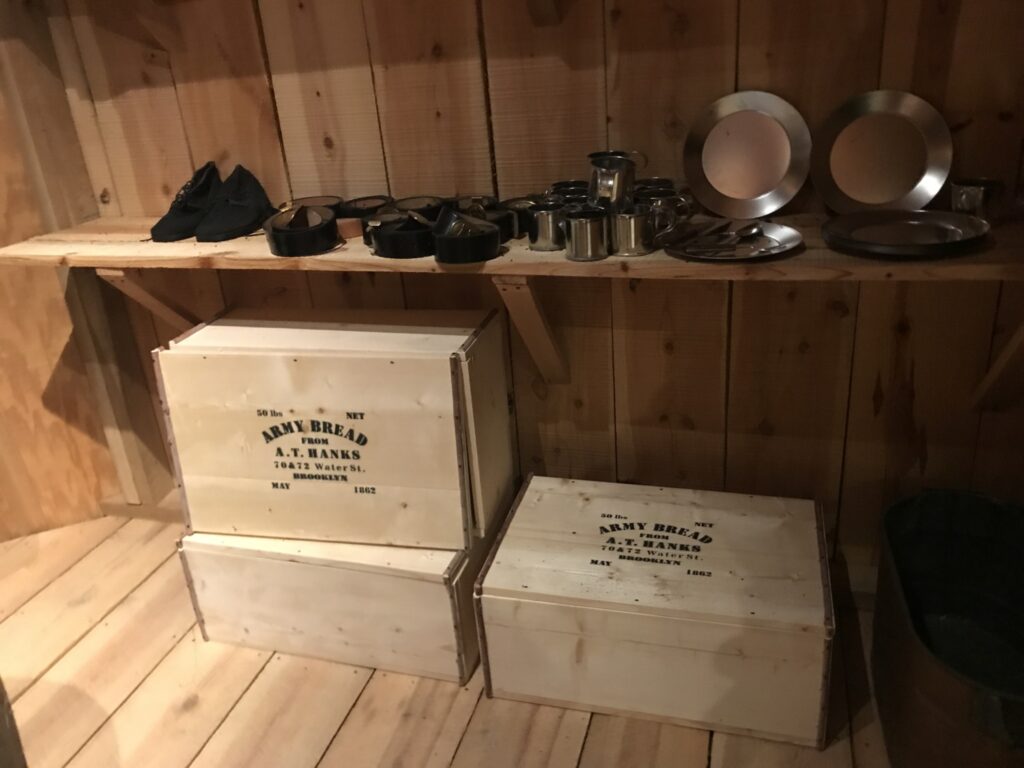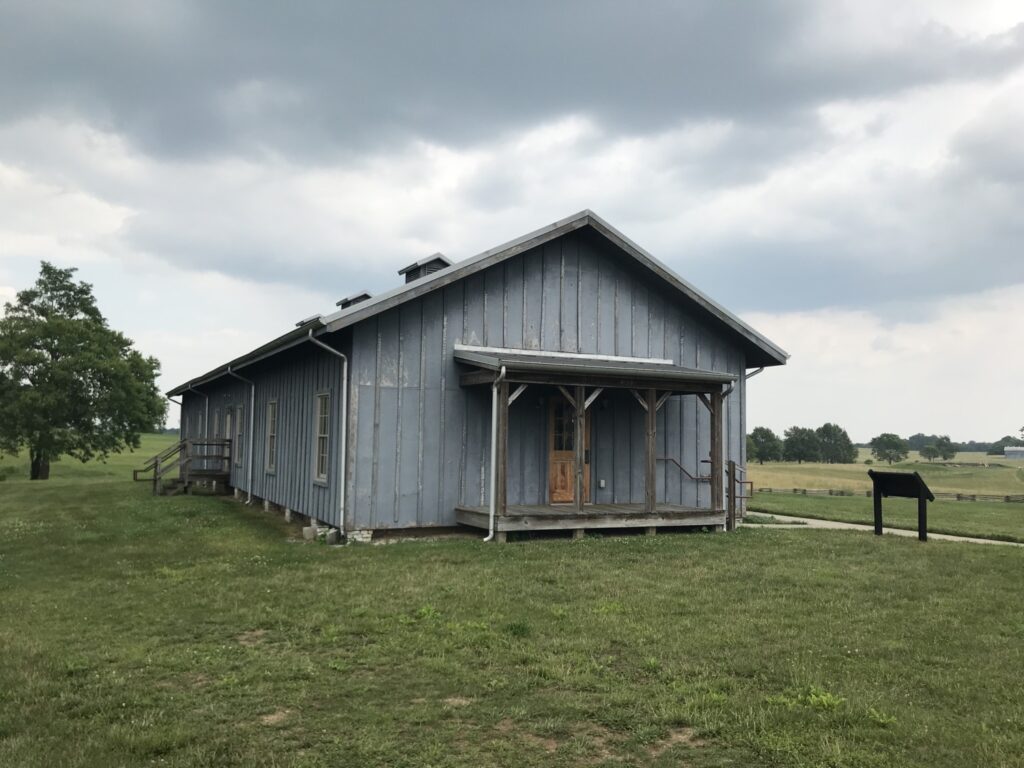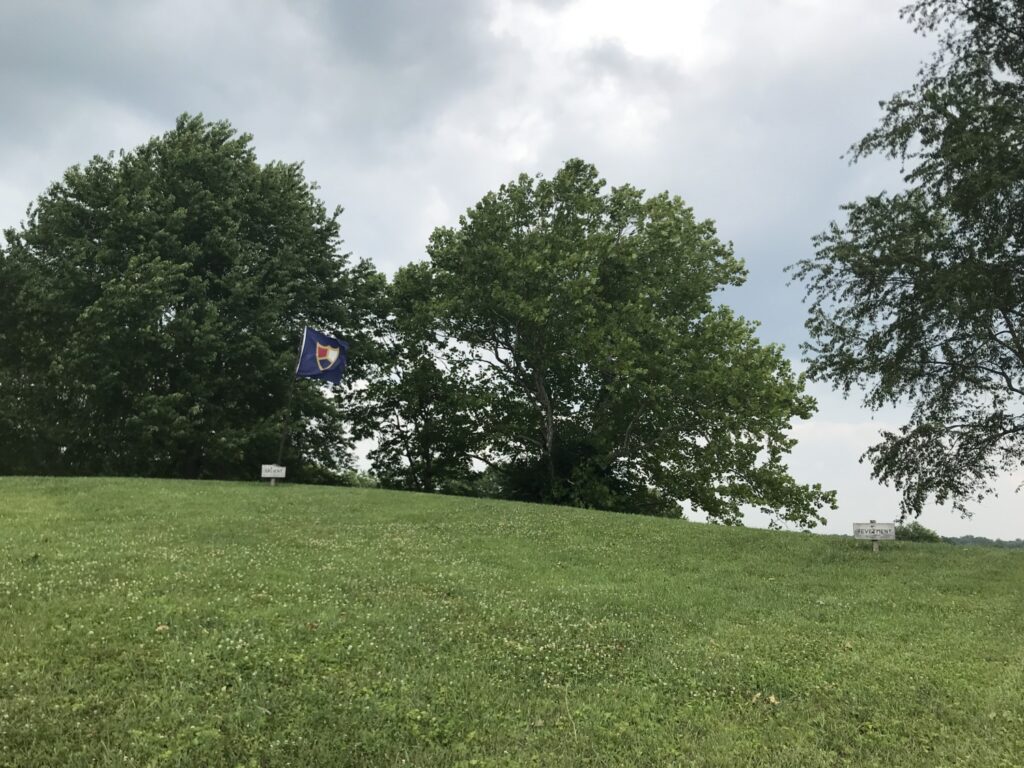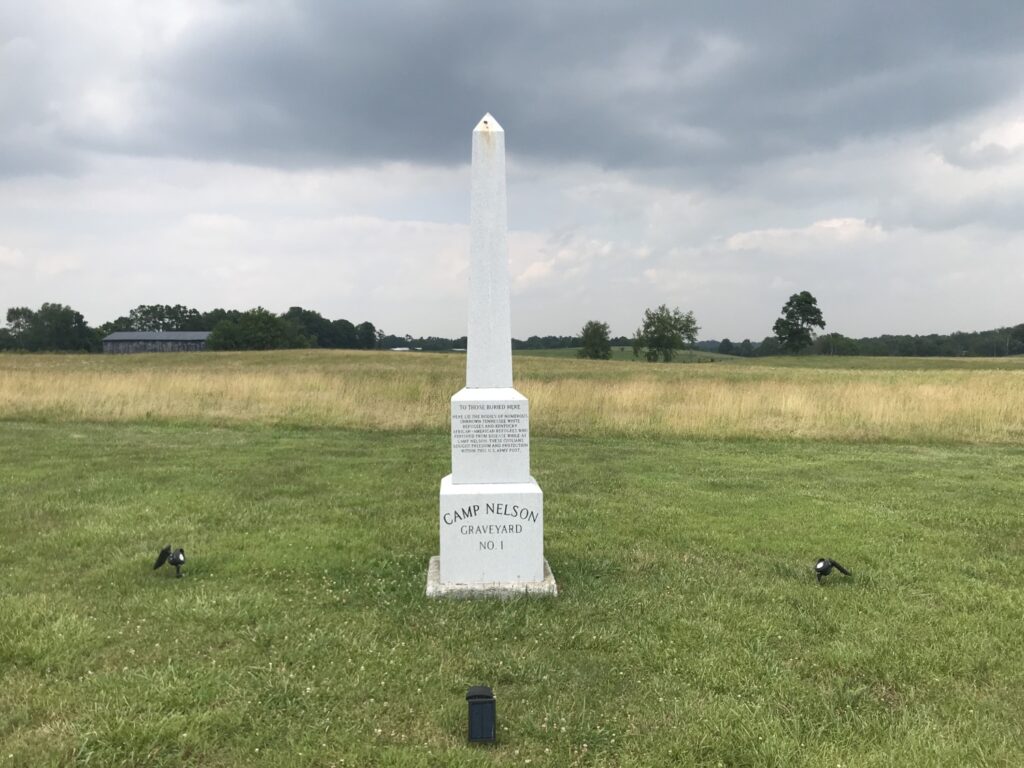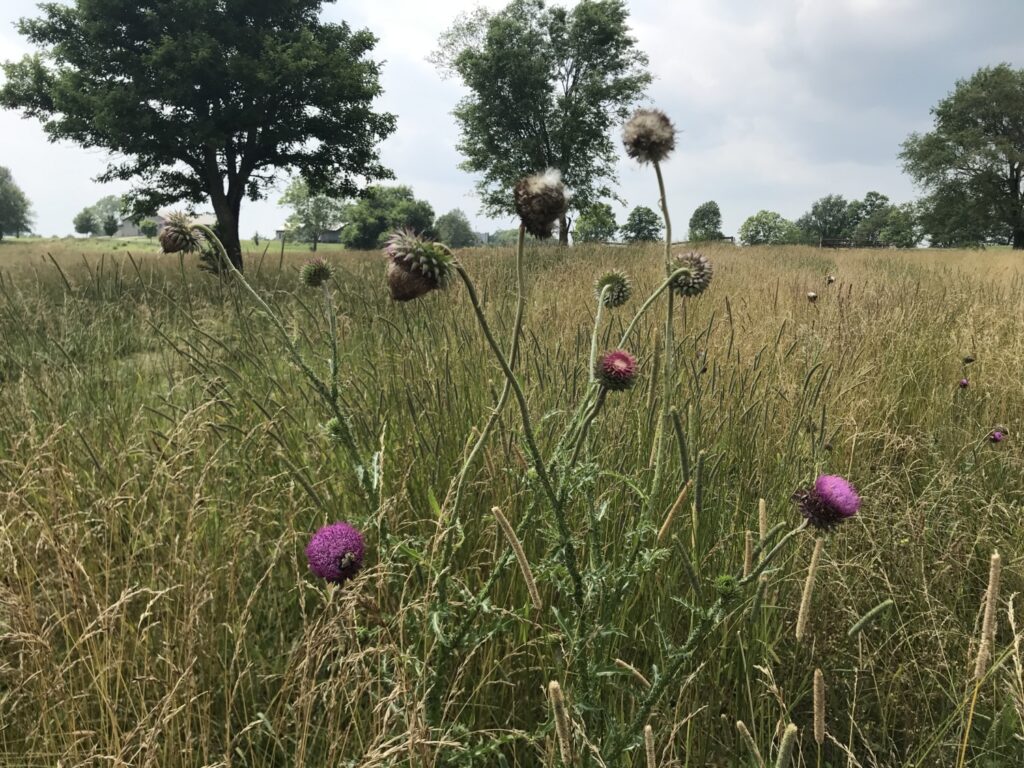In our continuing quest to visit all the National Park sites, Tom and I made a trip to visit Camp Nelson National Monument. Camp Nelson is located in Nicholasville, Kentucky, southwest of Lexington. It took us a couple of hours to drive up to it. The site is one of the newest in the National Park system, having been established as a national monument in 2018. Before that it was a Civil War Heritage site.

Camp Nelson National Monument is a fascinating bit of Civil War history about which I knew absolutely nothing. It was built as a supply depot for the Union Army in 1863. Camp Nelson was named after William “Bull” Nelson, a Union General from Kentucky who had recently been murdered. The site was selected to protect the bridge across the Kentucky River, to have a base of operations in central Kentucky, and to prepare to secure the Cumberland Gap and eastern Tennessee. The camp was also used to train new soldiers for the Union army. The Kentucky River and Hickman Creek steep palisades contributed to the selection of the site. Only the northern side needed fortifications against Confederate attack since three sides have 400–500 feet almost vertical steep cliffs.
After the Emancipation Proclamation in 1863, newly emancipated slaves were allowed to enlist in the Army and flocked to Camp Nelson for training. This did not apply to the enslaved in Kentucky, because they were not freed by the proclamation. Nevertheless, enslaved men from Kentucky escaped and ran away to Camp Nelson to enlist. When the Army discovered these men were from Kentucky, it was obligated to return them to their owners. The owners often whipped the men and their families in retaliation. After dozens of returned slaves were killed by their owners, the Army changed their policy and allowed all enslaved persons to enlist.
Once they became soldiers, the African-Americans were freed. This led to more escapes as enslaved men brought their families along to Camp Nelson. When the camp was overwhelmed by the number of refugees, they were evicted. Because they could not return to their lives of slavery, the refugees returned to camp. In November, 1864, Commander Speed Fry ordered the refugees taken out of camp and their homes burned. Of the 400 women and children evicted from the camp, over 100 died because of exposure and starvation.
Public outcry over the deaths led to a reversal of military policy. Camp Nelson became a refugee camp for all enslaved people, providing food and shelter. Congress also passed a law that said that the wives and children of African-American soldiers were also free. By the end of the war, a sizable community of African-Americans remained at Camp Nelson and hoped to make it their home.
The 525 acres of Camp Nelson National Monument preserves all of this history and allows the inspirational story of the enslaved seeking freedom to be told. The black men who enlisted served courageously during the war and struggled to be treated equally afterward. The most fascinating part of the Camp Nelson, for me, was reading the individual stories of the men and women who persevered.
During our visit to Camp Nelson, Tom and I watched the movie and then spent a lot of time in the excellent museum. We walked around the grounds, which preserve the fortifications built around Camp Nelson. There is also a reproduction of one of the barracks buildings, although it was not open. We talked to the one ranger who was working for quite a while and he answered all our questions.
Camp Nelson is a very interesting part of Civil War History. I am glad it is a piece of the National Park system, so this story can continue to be told.

